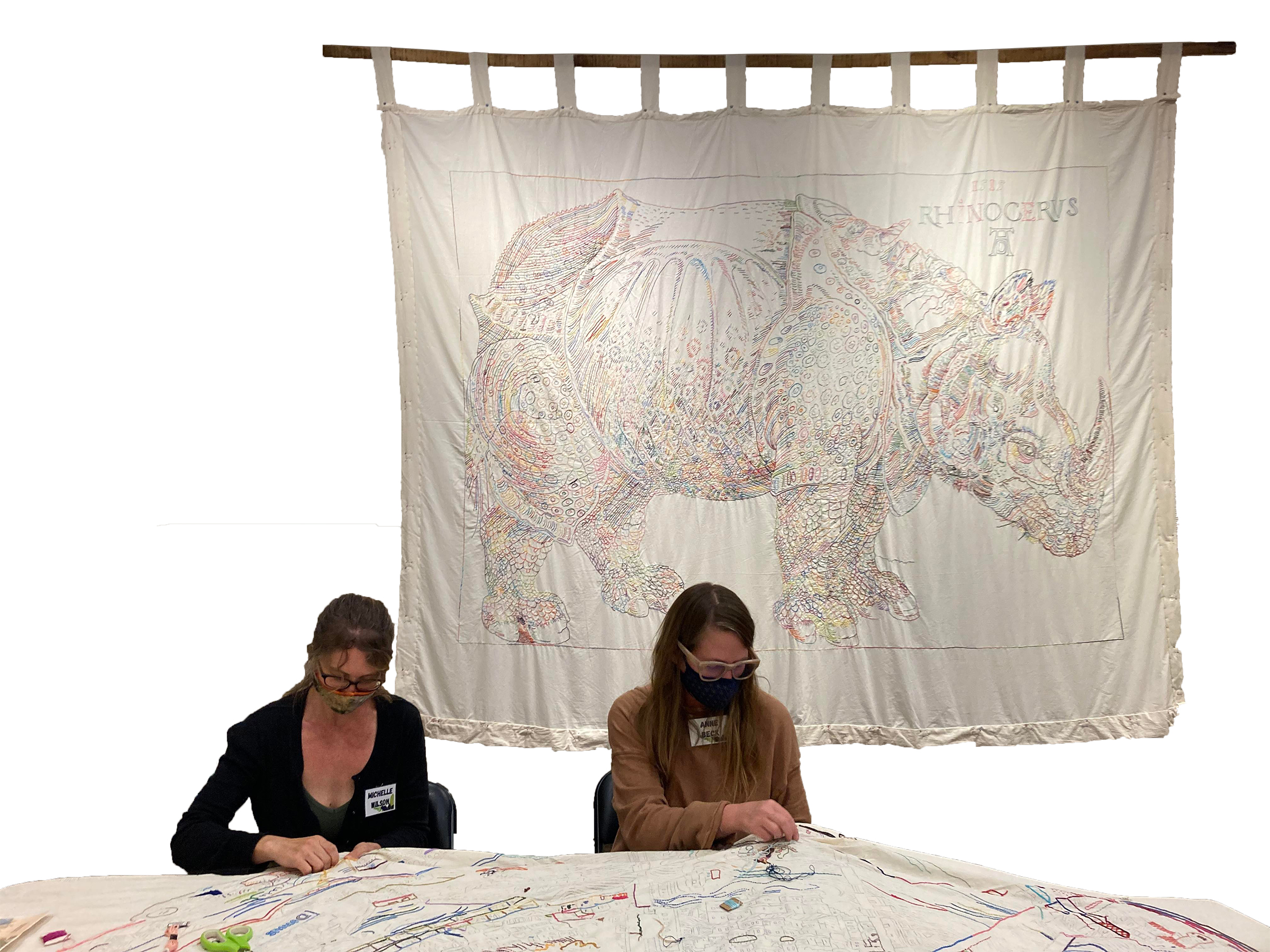Cast of Characters

Our Protagonists
Anne Beck & Michelle Wilson
The Rhinoceros Project
A socially engaged art collective. The project is a collaborative art platform involving contemplative artmaking, community sewing circles, papermaking happenings, absurdity and wonder. Through these communal artmaking events, the artists recontextualize art historical images to break down mythologies of colonialization and ensuing socio-political and environmental issues.
Supporting Players: Act 1

Albrecht Durer, a 16th Century Nuremberg artist and foremost printmaker of his time, the creator of the woodcut, The Rhinoceros.
Albrecht Durer
Self Portrait, oil on panel, 1498
Museo del Prado
Signature right [Das malt ich nach meiner gestalt / Ich war sex und zwanzig Jor alt / Albrecht Dürer] [I painted this from my own appearance; I was twenty-six years old]
Image Attribution:
Albrecht Dürer, Public domain, via Wikimedia Commons
Albrecht Durer
Self Portrait, oil on panel, 1498
Museo del Prado
Signature right [Das malt ich nach meiner gestalt / Ich war sex und zwanzig Jor alt / Albrecht Dürer] [I painted this from my own appearance; I was twenty-six years old]
Image Attribution:
Albrecht Dürer, Public domain, via Wikimedia Commons

The Rhinoceros (Ganda), the sacred animal at the center of the first Act of our story. Given by Sultan Muzzafar Shah II to the Portugese, Ganda sailed first to Portugal, and then set out to Rome, only to drown at sea when the ship hit a storm off the Ligurian coast. An early colonial displacement, and the inspiration for Durer’s print.
Albrecht Durer
The Rhinoceros, 1515
Wood engraving
Metropolitan Museum of Art
Image Attribution:
Albrecht Dürer, CC0, via Wikimedia Commons
Albrecht Durer
The Rhinoceros, 1515
Wood engraving
Metropolitan Museum of Art
Image Attribution:
Albrecht Dürer, CC0, via Wikimedia Commons

Ocem, Ganda’s handler, a Gujarati man who traveled with her to Europe. Little is known about his fate after the voyage.
Artist Unknown
Image Attribution:
unknown, India, Public domain, via Wikimedia Commons
Artist Unknown
| Animal Symbols of the Kings of the Twelve Heavens of the Vaimanika Gods, 1663-64 Page from a manuscript of the Sangrahanisutra Made in Gujarat, India or Rajasthan, India, opaque watercolor on paper 4 3/8 x 10 inches (11.1 x 25.4 cm) Philadelphia Museum of Art From the Philadelphia Museum of Art’s description: The complex Jain cosmology expounded in the Sangrahanisutra speaks of four classes of gods, the highest of which are called Vaimanika (flying) because they travel in airborne chariots. Each of the twelve Vaimanika gods has a complete heaven, ruled over by a king. Each king is represented by a different animal, as depicted and named in this painting. They are (left to right, top to bottom): antelope, water buffalo, boar, elephant-lion, ram, swimming spotted animal, horse, elephant, snake, rhinoceros, bull, and gazelle. | |
Image Attribution:
unknown, India, Public domain, via Wikimedia Commons

